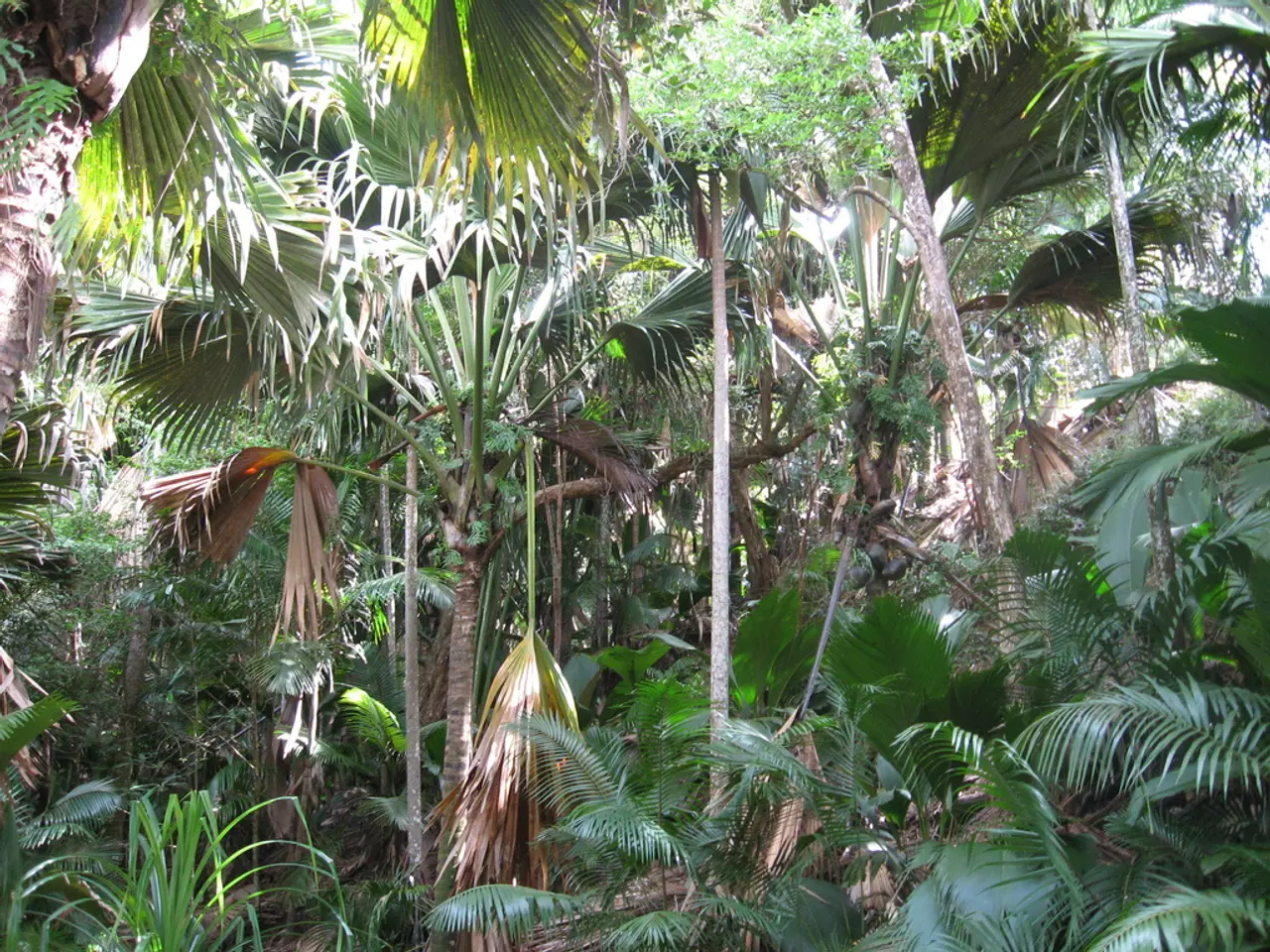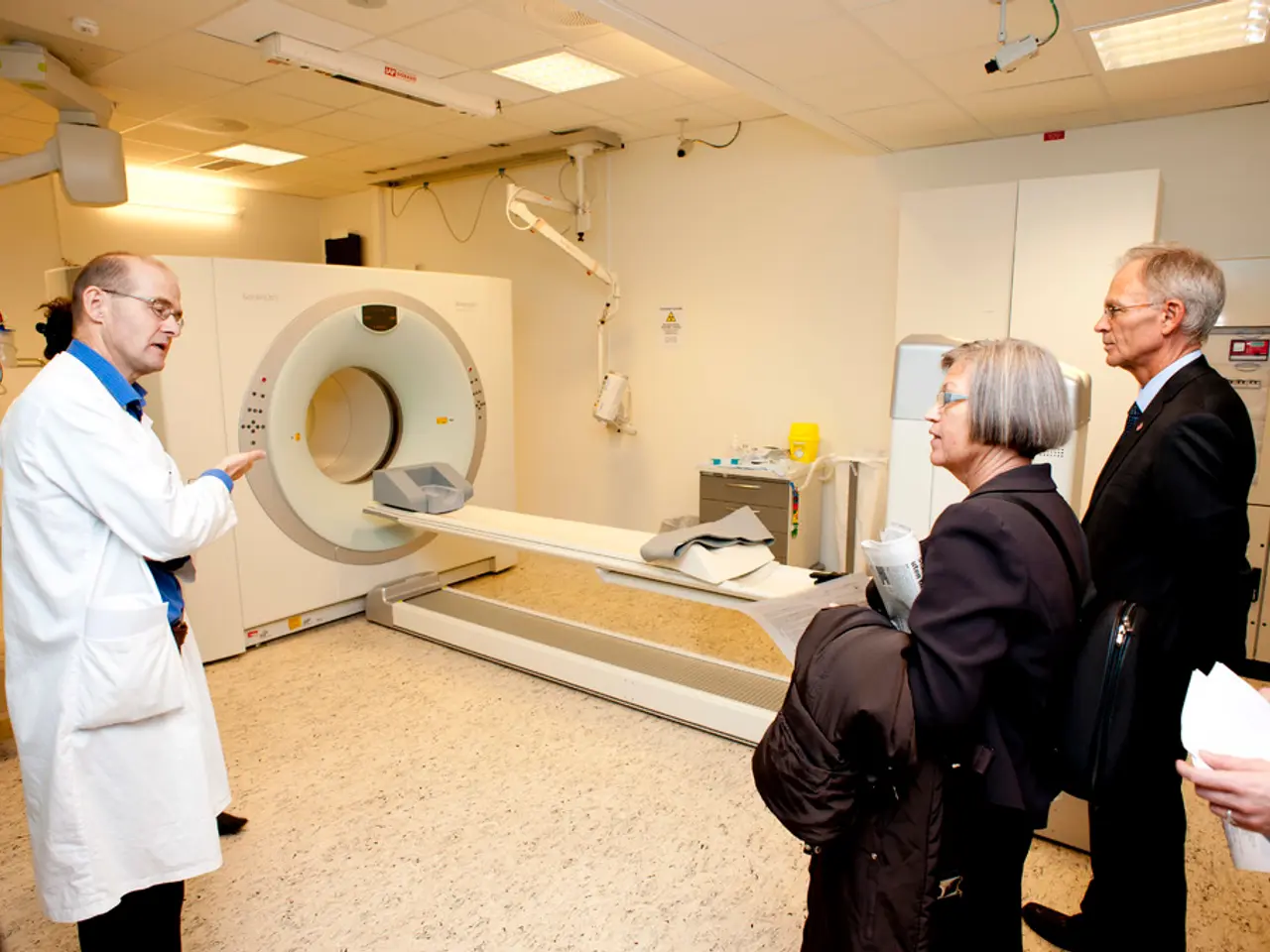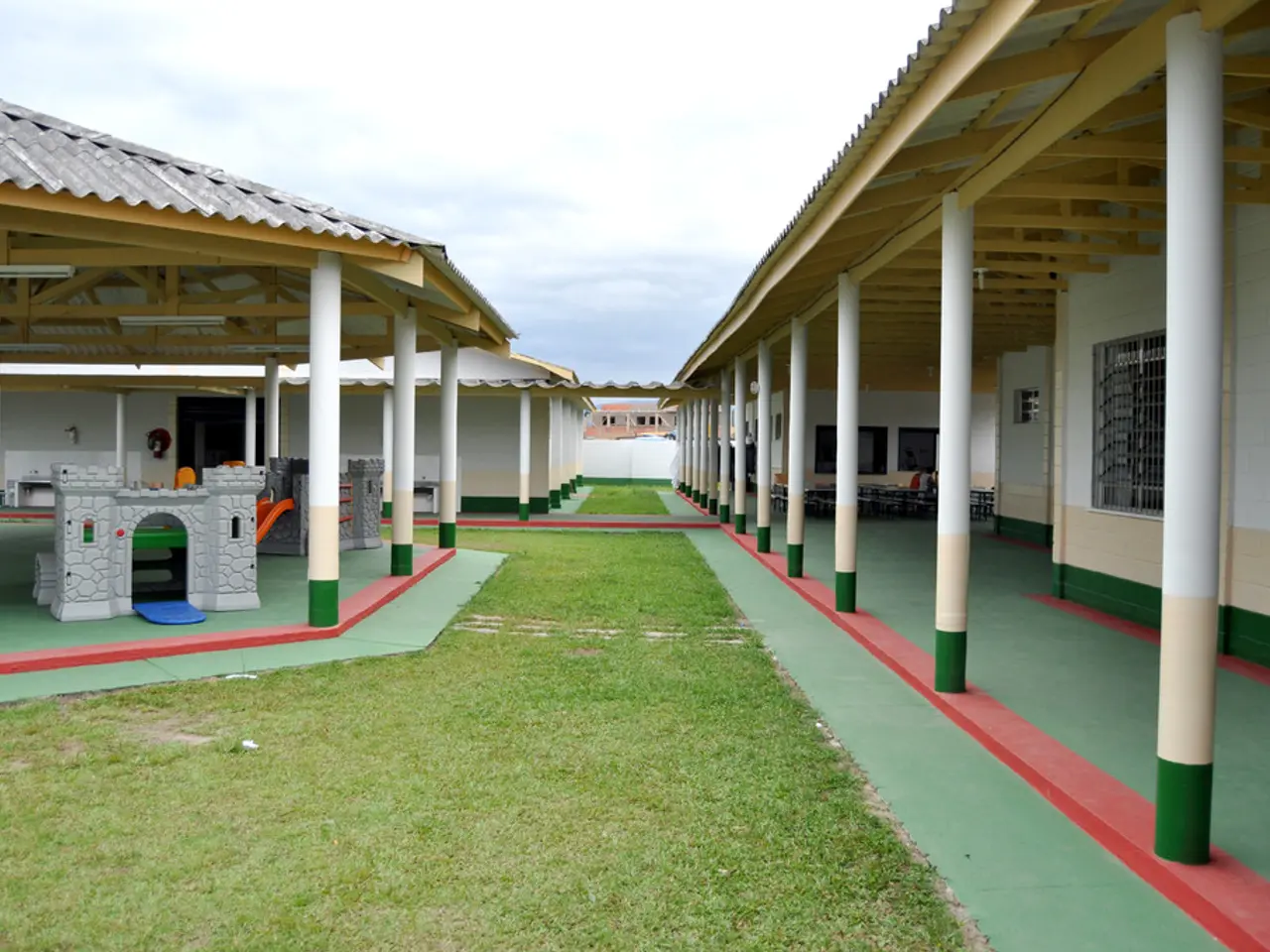Forests' carbon-absorbing capacity relies significantly on the presence of animals, explaining their crucial role.
In a groundbreaking study published in the Proceedings of the National Academy of Sciences (PNAS) in 2025, researchers have highlighted the significant role of seed-dispersing animals in the carbon sequestration capacity of naturally regrowing tropical forests.
The study, led by Evan Fricke, a research scientist at MIT, reveals that forests with healthy populations of seed-dispersing animals can absorb up to four times more carbon than similar forests with fewer seed-dispersing animals. This finding underscores the importance of these animals in maintaining the health and resilience of tropical forests.
Tropical forests, Earth's largest land-based carbon sink, are home to an array of species that play a crucial role in seed dispersal. Approximately 81-90% of tropical trees depend on animals such as birds, mammals, and even some amphibians for this process, which is essential for forest regeneration and carbon accumulation.
The researchers created an index of seed-dispersal disruption that revealed a link between human activities and declines in animal seed dispersal. They found that in forests identified as potential regrowth sites, seed-dispersal declines were linked to reductions in carbon absorption each year averaging 1.8 metric tons per hectare, equal to a reduction in regrowth of 57 percent.
The findings suggest that natural regrowth projects will be more impactful in landscapes where seed-dispersing animals have been less disrupted, such as areas that were recently deforested, are near high-integrity forests, or have higher tree cover. The researchers plan to explore how much of the decline in tropical forests' ability to sequester carbon is due to an increase in extreme droughts or fires versus declines in animal seed dispersal.
The study combines data on animal biodiversity, movement, and seed dispersal across thousands of animal species, along with carbon accumulation data from thousands of tropical forest sites. However, the researchers acknowledge that the quality of animal biodiversity data could be improved and introduces uncertainty into their findings. They also note that other processes, such as pollination, seed predation, and competition, influence seed dispersal and can constrain forest regrowth.
The decline of seed dispersal could affect not just the biodiversity of forests, but how they bounce back from deforestation. To support seed-dispersing animals, the researchers encourage interventions that protect or improve their habitats and that reduce pressures on species, ranging from wildlife corridors to restrictions on wildlife trade.
Restoring the ecological roles of seed dispersers is also possible by reintroducing seed-dispersing species where they've been lost or planting certain trees that attract those animals. The researchers believe the findings could make modeling the climate impact of naturally regrowing forests more accurate, as overlooking the impact of seed-dispersal disruption may overestimate natural regrowth potential in some areas and underestimate it in others.
All around the world, animal populations are declining. The research was supported by the MIT Climate and Sustainability Consortium, the Government of Portugal, and the Bezos Earth Fund. Co-authors on the paper include César Terrer, Charles Harvey, and Susan Cook-Patton of The Nature Conservancy.
In conclusion, the reduction in seed-dispersing animal populations hampers natural forest regeneration by limiting the dispersal of many tree species' seeds, which leads to diminished forest biomass growth and a lowered capacity to absorb and store atmospheric carbon dioxide, thereby weakening tropical forests’ contribution to climate change mitigation.
- The study published in PNAS in 2025, led by Evan Fricke, underscores the importance of seed-dispersing animals, including birds, mammals, and amphibians, in the carbon sequestration capacity of naturally regrowing tropical forests.
- The study suggests that natural regrowth projects will be more effective in landscapes where seed-dispersing animals have less disruption, such as areas that were recently deforested, are near high-integrity forests, or have higher tree cover.
- The researchers plan to explore how much of the decline in tropical forests' ability to sequester carbon is due to an increase in extreme droughts or fires versus declines in animal seed dispersal.
- The study combines data on animal biodiversity, movement, and seed dispersal across thousands of animal species, along with carbon accumulation data from thousands of tropical forest sites.
- The study reveals that forests with healthy populations of seed-dispersing animals can absorb up to four times more carbon than similar forests with fewer seed-dispersing animals.
- To support seed-dispersing animals, the researchers encourage interventions that protect or improve their habitats and that reduce pressures on species, such as wildlife corridors and restrictions on wildlife trade.
- The decline in seed dispersal could affect not just the biodiversity of forests, but their resilience to deforestation, their capacity to sequester carbon, and their contribution to climate change mitigation.




